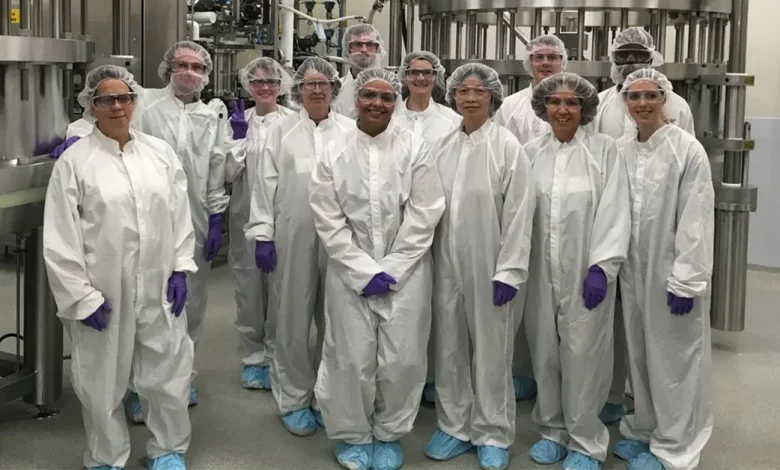- Courses
- GS Full Course 1 Year
- GS Full Course 2 Year
- GS Full Course 3 Year
- GS Full Course Till Selection
- Online Program
- GS Recorded Course
- NCERT (Recorded 500+ Hours)
- Polity Recorded Course
- Geography Recorded Course
- Economy Recorded Course
- AMAC Recorded Course
- Modern India, Post Independence & World History
- Environment Recoded Course
- Governance Recoded Course
- Science & Tech. Recoded Course
- International Relations and Internal Security Recorded Course
- Disaster Management Module Course
- Ethics Recoded Course
- Essay Recoded Course
- Current Affairs Recoded Course
- CSAT
- 5 LAYERED ARJUNA Mentorship
- Public Administration Optional
- ABOUT US
- OUR TOPPERS
- TEST SERIES
- FREE STUDY MATERIAL
- VIDEOS
- CONTACT US
Bio-Foundry in India
Bio-Foundry in India
20-05-2025

Introduction
- Recently, A meeting of the Board of Governors of the International Centre for Genetic Engineering and Biotechnology (ICGEB) was organized.
- A new Bio-foundry has been set up by the ICGEB.
What is Bio-Foundry?
- A biofoundry is a specialized laboratory that uses advanced technology.
- Its objective is to design, build, and test the efficiency of biological systems efficiently.
- It's like a high-tech workshop where scientists and engineers work together to create and improve living organisms or biological parts for various purposes.
- These improved organisms or biological parts are used in medicine, agriculture, or environmental protection.
Growth of India’s Biotech Sector in Last Decade:
- In August 2024, the Indian government introduced the BioE3 Policy (Biotechnology for Economy, Environment, and Employment) to promote high-performance biomanufacturing.
- Its aim is to drive green growth by enhancing research & development, innovation, and creating jobs in sectors.
- National Biopharma Mission (NBM) was launched in May 2017.
- It is an initiative launched in collaboration with Industry and Academic Institutions to accelerate biopharmaceutical development in the country.
- It was funded by the World Bank.
- It has increased employment opportunities.
- The mission will be implemented by Biotechnology Industry Research Assistance Council (BIRAC).
- It is 50% co-funded by a World Bank loan.
- India’s biotechnology industry has grown a lot in the past 10 years.
- This 10 years starts from 2014, when the biotechnology sector was worth $10 billion, but in 2024, it has reached $165.7 billion.
- Considering this progress in 10 years the government set its target to increase the worth of the biotechnology sector to $300 billion by the year 2030.
International Centre for Genetic Engineering and Biotechnology (ICGEB)Basic Overview
Mission and Objectives
Organizational Structure
Functions:
|
India is Becoming a Global Biotech Leader
- India is now the 12th largest biotechnology hub in the world and 3rd in the Asia-Pacific region.
- India has also become the largest producer of vaccines and has the 3rd largest number of startups in the world. For example, there were only 50 biotech startups in 2014, but now there are over 10,000 in 2024.
- During the COVID-19 pandemic, India made a big achievement by creating the world’s first DNA-based vaccine.
- This means the vaccine was made using advanced science that had never been used before for any other vaccine in the world.
- India didn’t just use the vaccine for its own people but it also helped other countries through a program called “Vaccine Maitri”which means “Vaccine Friendship”.
- India sent vaccines to many countries to support them during the pandemic.
- This showed India’s commitment to helping the world and caring for global health.
Vaccine MaitriAbout
Objective
Type of Assistance
Covax Facility:
Goal:
Impact
Strategic and Diplomatic Significance
|
New Medicines and Innovations in India
- India is also making progress in developing new medicines and health tools.
- One big achievement is the creation of Nafithromycin.
- Nafithromycin is a new antibiotic for treating bacterial pneumonia especially those that have become resistant to older antibiotics.
- Indian scientists have also developed diagnostic kits for detecting Dengue and HIV.
What are the challenges Associated with Bio-Foundry?
- High Cost of Setup and Maintenance: Building a biofoundry needs expensive machines and advanced labs. India still lacks enough investment to support such high-tech infrastructure.
- Shortage of Skilled Workers: Biofoundries need trained scientists, engineers, and technicians. India doesn’t yet have enough people with the right skills for this new field.
- Lack of Coordination Among Institutions: Many research institutes and industries work separately. Without teamwork, sharing data, tools, or ideas it will remain a difficult task.
- Limited Access to Raw Materials and Tools: Biofoundries need special chemicals, genes, and biological parts. These are not always available easily or cheaply in India.
- Weak Legal and Ethical Guidelines: There are not enough clear rules on safety, privacy, and use of synthetic biology. This creates confusion and slows down research and innovation.
Way forward
- Increase Government and Private Investment: More money should be given by both government and private companies to build and maintain bio foundries. Special funding schemes can help create world-class labs and infrastructure.
- Develop Skilled Workforce: Introduce new courses and training programs in synthetic biology and biotechnology. Partnering with foreign universities and companies can help in training Indian scientists and technicians effectively.
- Promote Collaboration Between Institutions: Create groups of platforms where research institutes, industries, and startups can work together. This kind of platform can help them share tools, data, and good ideas easily.
- Improve Access to Raw Materials and Tools: The government should encourage companies in India to produce important biological parts and tools locally. Until local production is sufficient, the process for importing these scientific materials should be simplified.
- Frame Strong Legal and Ethical Guidelines: The government should make simple and clear rules to ensure the safe and responsible use of synthetic biology. Along with this, special committees should be set up to check new projects and make sure that the research is done in a safe and ethical way.
|
Also Read |
|
| FREE NIOS Books | |



